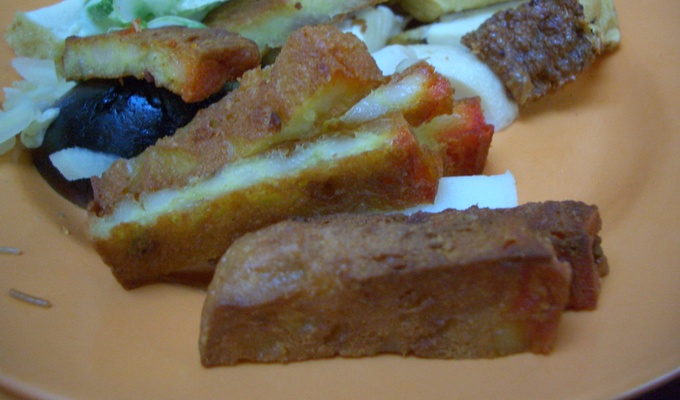Ngo hiang, also known as heh gerng lor bak or kikiam is a unique Hokkien and Teochew dish widely adopted in Indonesia, Malaysia, the Philippines, Singapore, and Thailand; in addition to its place of origin in southern China.
It is essentially a composition of various meats and vegetables and other ingredients, such as a sausage-like roll consisting of minced pork and prawn (or fish) seasoned with five-spice powder (Hokkien: Chinese: 五香粉, ngó͘-hiong-hún) after which it is named, rolled inside a tofu skin and deep-fried, lup cheong, cucumber, century egg, ginger, deep-fried egg, deep-fried tofu, fishball and many others. It is usually served with chili sauce and a house-special sweet sauce. Many stalls in Singaporean food courts and hawker centres sell fried bee hoon with ngo hiang; this combination is common for breakfast and lunch. In Indonesia, people enjoy ngo hiang with sambal.
The Philippine versions were originally introduced by Hokkien migrants and are generally known as kikiam. However, the variant called ngohiong from Cebu has diverged significantly from the original dish. Instead of using beancurd skin, it uses lumpia wrappers. A street food dish also sometimes called "kikiam" or "tempura" in the Philippines is neither of those dishes, but is instead an elongated version of fishballs. The street food version of kikiam was made from pork, not fish.
